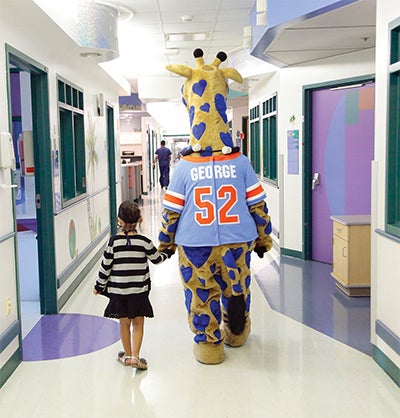Diversity, Disparity, Advocacy, Service

Valley Diversity
The Central Valley is no stranger to diversity. According to California State University Fresno’s San Joaquin Valley Public Health Consortium, the Central San Joaquin Valley (defined as 10 of the 13 counties served by Valley Children’s Healthcare) is home to nearly 4 million people. The area is culturally diverse, with more than 70 ethnicities and 105 languages represented. The 2010 US Census anticipates the Central Valley population will reach nearly 6 million by 2030.
Health, Economic and Educational Disparities
Despite the Valley’s vast agricultural production and rich ethnic and cultural makeup, hardships and inequalities threaten the health and future of our children. Food insecurity is widespread throughout the Valley, with up to 20% of the population in many counties unable to afford enough food to maintain a healthy diet. Healthy People 2010 reported obesity rates for children ages 12-17 in Fresno County near 20%, and Tulare County at a staggering 27%.
Three Central Valley metropolitan areas – Visalia, Merced, and Bakersfield – ranked in the top 10 US metropolitan areas with the lowest average education, according to a 2013 report from the Milken Institute. According to the same report, seven of the counties served by Valley Children’s fell below the national poverty level, with Tulare County raking the worst at 23.8% of the population below the national poverty level.
Four Central Valley cities ranked among the top 5 most polluted cities in the American Lung Association’s State of the Air 2017.
Physician Shortage
There is a national disparity between the percentages of children and physicians from certain minority groups. It is no different in the Central Valley. For example, a 2010 report by the California Healthcare Foundation sited a mere 6% of Latino physicians representing 46% of Valley’s Latino population; with 19% of providers overall speaking Spanish.
The Council on Graduate Medical Education recommends a minimum of 60 primary care providers and 85 specialists per 100,000 residents. According to a report by the California HealthCare Foundation in 2014, the San Joaquin Valley averages far below, with 48 primary care doctors and 80 specialists per 100,000 residents. The Council on Graduate Medical Education Valley statistics lie in stark contrast to the Bay Area, which averages 86 primary care physicians and 175 specialists per 100,000 residents.
All of this, and more, translates to lower levels of health literacy, decreased access to health care services, and ultimately poorer health outcomes for the Valley’s most vulnerable population.
Valley Children's Mission
The mission of Valley Children’s Healthcare is to provide high-quality, comprehensive healthcare services to children, regardless of their ability to pay, and to continuously improve the health and well-being of children.
The organization recognizes that ethnic and cultural diversity are important aspects of providing the highest quality care, and is dedicated to recruiting both physicians and staff who are equally diverse. Valley Children’s Healthcare is home to more than 670 physicians and 3,500 staff, and partners with providers and organizations throughout our service area to deliver the best care to kids closer to home. The Pediatric Residency Program is equally committed to the health and well-being of our pediatric population, actively advocating for and serving the children of the Central San Joaquin Valley.